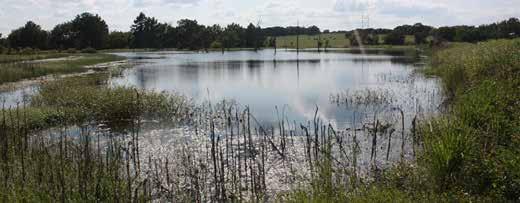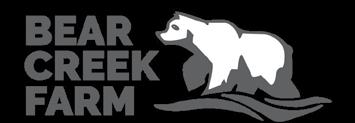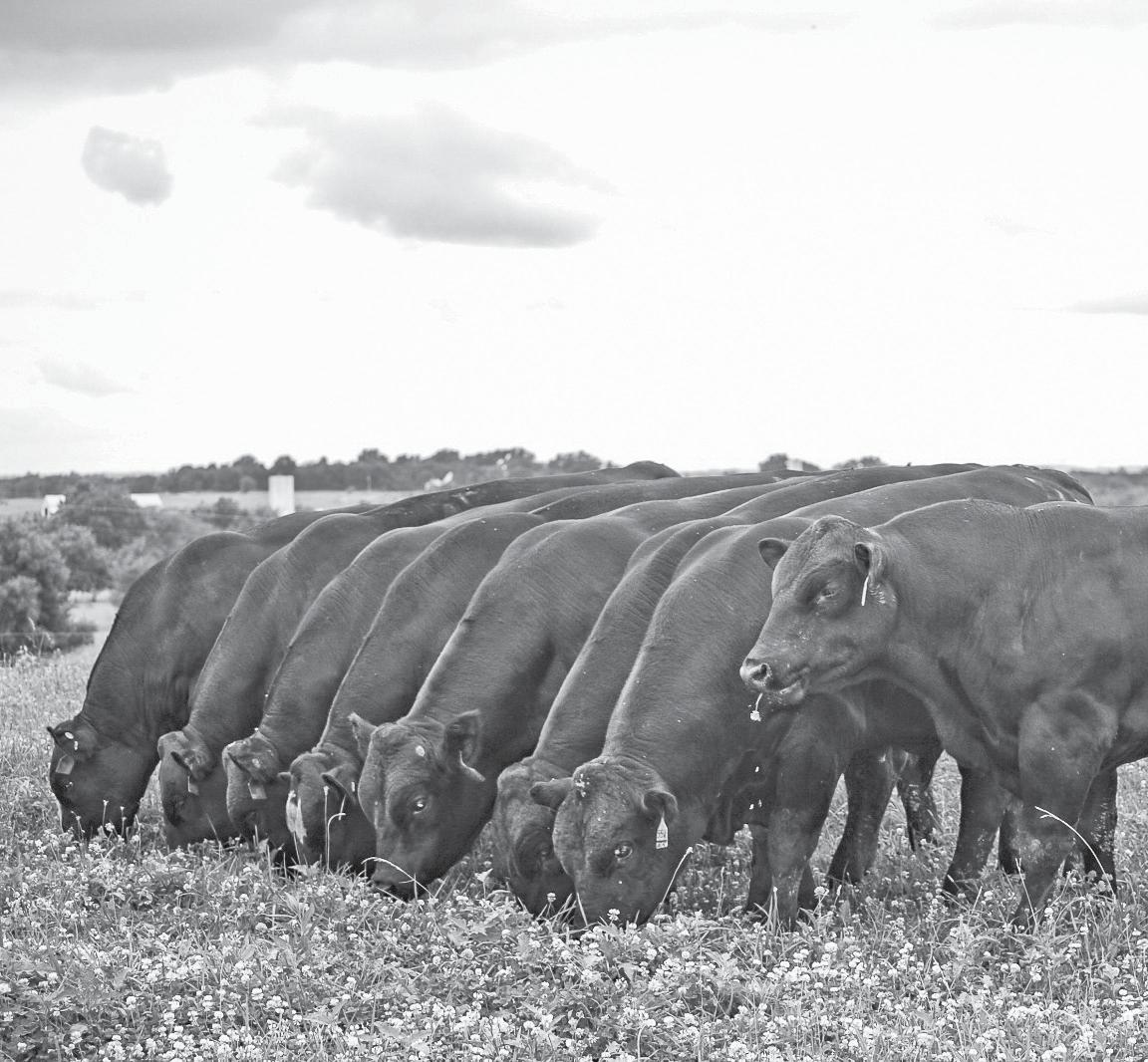
9 minute read
Adequate Plant Cover Is Necessary for Good Water Quality
GOOD PLANT COVER HELPS STABILIZE THE SOIL AND PREVENT SOIL FROM POLLUTING WATER Noble Foundation
Quality of water residing on or flowing off land is a direct reflection of land management. Most land management practices that are associated with the production of livestock, crop, hay, timber and wildlife can influence water quality. Good water quality in impoundments and streams is dependent upon adequate plant cover throughout watersheds and along shorelines. Impoundments are water bodies such as ponds, tanks, lakes, marshes and wetlands. Streams include creeks and rivers. Importance of Water Quality Productivity of aquatic systems is closely tied to water quality. Many different pollutants can cause problems, but soil is the most common pollutant in water (Figure 1). Muddy or polluted water supports lower diversity and abundances of native plants and animals, such as visible plants (macrophytes), microscopic plants (phytoplankton), ducks, amphibians, fishes, crustaceans, insects and mussels. For example, good water quality can support two to three times more largemouth bass and bluegill than muddy water. Importance of Plant Cover We want soil to stay on the land and not be transported off the land with the water. Maintenance of adequate live plant cover to protect and hold the soil is the most important concept for maintaining good water quality. Living plant roots help stabilize the soil and the shorelines of impoundments and streams. Plant material on top of the ground protects soil from the impacts of raindrops. Plant cover also filters water, increases infiltration and slows runoff. Better infiltration provides more consistent stream flows from groundwater and springs. Plant particles in the water help clump soil particles together and help separate them from water. The appropriate amount of plant cover depends on location. Obviously, less plant growth occurs in a desert than an eastern U.S. prairie meadow. An eastern U.S. prairie meadow receives more rain than a desert, so it needs more plant cover to stabilize and protect the soil and to filter and slow water runoff. 7 Principles for Maintaining Good Plant Cover • Develop healthy soils. • Maintain proper livestock and wild herbivore numbers below maximum carrying capacities. • Practice proper livestock grazing management. • Implement appropriate rest (periods with no disturbances, such as grazing, fire, mowing, haying, tillage, pesticide application, etc.) • Minimize or eliminate tillage. • Minimize pesticide application, such as herbicides, insecticides, fungicides, etc. • Incorporate appropriate fire frequencies on rangelands and woodlands. Importance of Proper Livestock Management Proper livestock stocking rate and grazing management facilitate adequate plant cover. When hay needs to be fed on rangeland that lacks substantial snow or ice, livestock stocking rate is too high for optimum water quality, plant health and profitability. Livestock distribution, grazing management and possibly stocking rate are not managed well for optimum water quality when impoundments or streams have bare shorelines during most days of a year. Plants need periodic growing-season rest from disturbances, such as grazing, so plants can recover and grow adequate biomass to protect the soil and filter water runoff. Good water quality can support two to three times more largemouth bass and bluegill than muddy water. Options for Managing Livestock Distribution • Fencing • Fire • Shepherding • Stocking and destocking livestock Temporary grazing can be accomplished by stocking livestock, or implementing short-term grazing leases, and then selling livestock or transporting them elsewhere. A human shepherd and one or more trained dogs can be used to selectively move livestock across a landscape. Fire can be used to manage livestock distribution through the approach called patch-burn grazing or pyric herbivory However, fencing is most commonly used to manage livestock distribution. An impoundment or stream can be fenced separately from a paddock, or it could simply be part of a fenced paddock that receives adequate rest. A fenced impoundment can provide livestock water through a livestock water-access point or via water piped to a trough. Piping water to a freeze-proof water trough has several advantages but is usually best incorporated during initial construction of an impoundment. However, a floating water-access point can be added relatively easily to most existing impoundments (Figure 2). Justification for Fencing Some Impoundments and Streams Livestock stocking rate and grazing management can be appropriate for maintaining adequate plant cover in a watershed, but an impoundment or stream can still suffer negative impacts. Negative impacts can occur to an impoundment or stream when the number of livestock that water at an impoundment or the frequency or duration of livestock use is excessive. Livestock with unrestricted access to an impoundment or stream can cause at least nine problems: • Increased clay turbidity in water. • Bare shorelines. • Overgrazed plants near water. • Disturbed bottom sediments. • Reduced aquatic biodiversity. • Breakdown of bank slopes, which broaden shallow zones. • Erosion on dams and spillways from trailing and overgrazing. • Addition of undesired nutrients to water through feces and urine. • Reduced nutrient distribution on pasture or rangeland. An impoundment can be fenced to minimize these negative livestock impacts. Figures 1 and 3 show unfenced and fenced impoundments on the same ranch.
Figure 1. An unfenced impoundment with substantial livestock impact

Figure 2. A floating polyethylene pipe livestock water access point at a fenced pond

Figure 3. A fenced impoundment on same ranch as Figure 1.

Figure 4. Approximately 38 years of unmanaged woody encroachment around a pond on the right side of the fence with a paddock that has been grazed regularly by cattle on the left— both sides of the fence were alike when fenced. Woody vegetation growth inside fenced areas around ponds and streams on this ranch helped increase white-tailed deer habitat and abundance because this property formerly had relatively little woody cover Fencing an impoundment or stream also can benefit livestock. Fencing prevents livestock from walking across frozen impoundments, falling through the ice and drowning. It also prevents livestock from walking across mudflats during drought-induced drawdowns, getting stuck in the mud, dying from exhaustion or having to be rescued. Better quality water provided in fenced impoundments and streams can increase animal performance. Cons of Fencing Impoundments and Streams Fencing is not justified at all impoundments and streams when livestock impacts are relatively minor. Fencing may not be justified when only a few livestock water at an impoundment that is several acres in size or at a stream that is hundreds of yards long. Fencing also may not be justified when livestock use an impoundment or stream only a few days per year followed by long rest periods that allow adequate recovery of water quality and shoreline plants. Although many pros exist for fencing impoundments and streams, the following four cons should be considered: • Additional expense and labor are involved with constructing and maintaining a fence or a water-access point. • Increased woody encroachment commonly occurs inside livestock exclosures due to reduced livestock impact (Figure 4). This can be desirable when a property needs more woody vegetation for landscape goals. However, woody vegetation can be undesirable when it interferes with dam stability or impoundment access and use.
Thus, woody plant control may be necessary inside a fenced area around an impoundment or stream. • Floating water-access points are usually the first locations to freeze in an impoundment due to reduced wave action.
However, confining livestock activity to a single location can help reduce ice thickness over extended freezing periods. • A livestock exclosure reduces the grazeable area available to livestock, except when the area is occasionally flash grazed. Good quality water is important for many goals, such as optimum livestock production, sport fish production, landscape aesthetics and more. Good water quality requires adequate plant cover in watersheds and along shorelines. Proper management develops and maintains adequate plant cover.
LIMOUSIN Breeders of the Bluegrass

Fullblood & Purebred Embryos & Semen Stephen: 270-799-8685 760 Emily Court Bowling Green, KY 42101 achhlimousin@twc.com Facebook: ACHH Limousin
B.F. Evans Cattle Company
Byron Evans
P.O. Box 1509 599 Ray Allen Lane Versailles, KY 40383 Byron 859-509-8046 bfevanscattlecompany@gmail.com byron.evans59@yahoo.com
Buck’s Limousin Farm
“The Best Kept Secret in Eastern Kentucky” John Buck: (606) 474-7451 • (606) 922-8174 2494 South St. Hwy. 7, Grayson, KY. 41143 johnbuck474@windstream.net “cattle for sale - private treaty”
CUMMINS POLLED LIMOUSIN
David & Donald P. Cummins 4312 Willow-Lenoxburg Rd. Foster, KY 41043 David: 606-747-5886 (C) 606.782.7003 cumminsd@windstream.net
Daniel Gettings GETTINGS LAND & CATTLE
Elbow Bend & Center Point Rd. Tompkinsville, KY 42167 (270) 487-9454 or (270) 202-7755
“Registered Limousin - LimFlex - Angus Genetics”
R
icci olanDR
Ricci & Brenda Roland 423 Lebus Lane Cynthiana, KY 41031 859-234-3986 • 859-234-7344 rolandlimousin@earthlink.net
Allen & Jon Anderson
260 Henderson Rd. Eubank, KY 42567 Allen: 606-872-8072 Jon: 606-305-8859 “Quality Limousin + LimFlex Cattle!”
ROLLING OAKS FARM
Terry W. McPhetridge • 606-843-6903 Cell: 606-524-9241 1645 Winding Blade Rd. East Bernstadt, KY 40729


WHITE LIMOUSIN & WHITE ANGUS
Donald & Mary Ann Wenzel
994 Airport Road • Falmouth, KY 41040 (859) 654-3612 • (859) 322-0752 maryawenz@aol.com
TOMORROW’S REGISTERED WHITE ANGUS TODAY!
Joey & Donnie Massey
80 Sublimity School Rd. • London, KY 40744
606-682-2126 • 606-682-2125
Bob Minerich, 859-582-6888 2003 Barnes Mill Rd. Richmond, KY 40475 minegwen@aol.com “Cattle for sale private treaty”
Greg Blaydes 859-338-9402 James Hicks 859-227-0490
1225 E. Leestown Rd. Midway, KY 40347
Tom & Chris Daniel
5171 Camargo-Levee Rd. • Mt. Sterling, KY 40353 859-498-0030 859-585-1785 859-585-8388 “Your source of purebred homopolled/homoblack.”

Decker Family Limousin & LimFlex Kenny & Tiffany Decker Leitchfield, KY • (270) 589-7999
BULLS - HEIFERS PROCESSED BEEF Brad Kidd
(606) 495-6396 (606) 738-9493
Paul Kidd
(606) 743-7349 8254 Hwy 711 West Liberty KY 41472
Performance you can count on! Russ Crum • 2423 KY Hwy 3003 Cynthiana, KY 41031 • 859-298-8713
FOUNDATION SALE VII
September 18, 2021 • 1PM CST
United Producers Facility • Bowling Green, KY
Selling FULLBLOOD & PUREBRED LIMOUSIN Genetics • To consign or for catalog call ACH Holdings, LLC, Steven Haynes 270-799-8685
Kevin and Rachel Barron
SWAIN SELECT SIMMENTAL

12113 Green Valley Dr. Louisville, KY 40243 frederickswain@bellsouth.net facebook.com/swainselectsimmental Fred & Phyllis: 502-245-3866 502-599-4560 Chi & Angie: 502-287-2116


JUDY AND RONDAL DAWSON 1156 Buzzard Roost Road Shelbyville, KY 40065 502-593-5136 • jrdawson22@outlook.com
IGS
International Genetic Solutions
Bill Kaiser • Shelbyville, KY • 502.639.4337

Rocking P Livestock
8308 Orangeburg Road Maysville, KY 41056 Chan: 606-584-7581 Keith: 606-584-5626 rockingplivestock@maysvilleky.net
BRIAN & HEATHER SWAIN
3906 Pottertown Road Murray, KY 42071 • 270-293-4440 wksbswain@murray-ky.net SIMMENTAL AND SIMANGUS BULLS FOR SALE

1939 Huntertown Road Versailles, KY 40383 BULLS FOR SALE Chris Allen 859-351-4486 callenuky@hotmail.com Dr. Henry Allen 859-229-0755
HEAD TO HEAD
Modern-day ranching requires more information to produce better animals. International Genetic Solutions works across breeds to provide more accurate head-to-head comparisons and maximum profitability. IGS incorporates generations of data and the world’s largest multi-breed database to enable more powerful breeding decisions than ever before.
Better cattle. Better profits.
IGS STAND TOGETHER
406.205.3033 • internationalgeneticsolutions.com
JOIN KENTUCKY SIMMENTAL ASSOCIATION
Mail to: Lindsay Phillips 8308 Orangeburg Road Maysville, KY 41056
FARM NAME
YOUR NAME
ADRESS
CITY, STATE
ZIP
WORK PHONE
HOME PHONE

